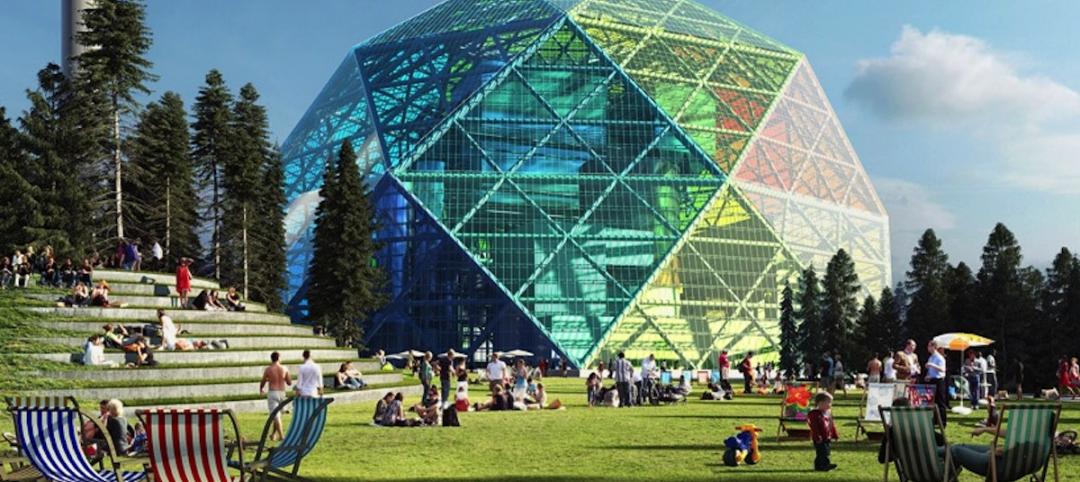We’re not in the habit of recommending books in these pages, but we could not ignore two recent noteworthy publications. (Both are available on amazon.com.)
Net Zero Energy Design: A Guide for Commercial Architecture is an in-depth, 441-page exploration into the practical problems of designing and building net-zero buildings. The author, architect Tom Hootman, AIA, LEED AP BD+C, is Director of Sustainability at RNL, the Denver-based design firm.
He was a key contributor to the Building Team that designed the Research Support Facility at the National Renewable Energy Laboratory, the U.S. Department of Energy lab in Golden, Colo. It was the first net-zero building in the U.S. to demonstrate both environmental and economic feasibility.
If your firm is contemplating taking on a net-zero energy project, you would be remiss if you ignored this book, the first essential manual in the field.
See my interview with Hootman on how NZE buildings are creating a new role for architects, at /new-leadership-role-architects-net-zero-design.
Transformational Thought: Radical Ideas to Remake the Built Environment is a series of 14 essays by Jason F. McLennan, LEED Fellow, founder of the Living Building Challenge and a primal force in the U.S. Green Building Council’s Cascadia Green Building Council. He was named to Building Design+Construction’s “40 under 40” list in 2010 as a 32-year-old principal at BNIM.
McLellan roams far and wide in his essays, from the role of women in a “restorative future,” to the urban agriculture revolution, to a discussion challenging the wisdom of height and density in urban structures.
It is not always easy to agree with McLellan, and his provocative argumentation will keep you awake at night, thinking. +
Related Stories
Energy Efficiency | Apr 2, 2015
C40 cities across the globe are making sustainability a policy
The U.S. Green Building Council and C40 Cities Climate Leadership Group with the World Green Building Council released landmark green building city market briefs highlighting sustainable building policies in 66 cities around the world.
Green | Apr 1, 2015
Global wind power installations expected to slow through 2019
After a 20% falloff in 2013, the global wind power industry made a strong comeback in 2014, with a record 51.2 gigawatts installed. But a new report from Navigant Research forecasts a curtailment in growth.
Sponsored | Walls and Partitions | Mar 25, 2015
Metl-Span systems meet design needs in cost effective manner
The goal from the beginning was to construct an energy efficient building with insulated metal panels.
Energy Efficiency | Mar 19, 2015
Sealing the deal: An easier way to dike air leaks in buildings
An aerosol product injected into ductwork allowed Hyundai to open its new U.S. HQs on time.
Sponsored | Energy Efficiency | Mar 16, 2015
California cuts its carbon footprint with solar
Spanning four locations in Central Valley, the California Renewable Energy Small Tariff projects pack a lot of power and are prime examples of the real-life benefits of going solar.
Energy Efficiency | Mar 4, 2015
DOE launches crowdsourcing website for technology innovators
The Oak Ridge National Laboratory launched a new crowdsourcing website called the Buildings Crowdsoucing Community to collect and share ideas by innovators for energy-efficient technologies to use in homes and buildings.
Cultural Facilities | Feb 25, 2015
Bjarke Ingels designs geodesic dome for energy production, community use
A new building in Uppsala, Sweden, will serve as a power plant during the winter and a venue for shows, festivals, and music events during the warm months.
Multifamily Housing | Feb 18, 2015
Make It Right unveils six designs for affordable housing complex
BNIM is among the six firms involved in the project.
Codes and Standards | Feb 12, 2015
ASHRAE, USGBC, IES consider biomass requirements in green building standard
The proposal would add biomass to approved renewables.
Sponsored | Energy Efficient Roofing | Feb 12, 2015
How does airflow under a metal roof further enhance energy savings?
Metal roof coatings with solar reflectance can help building owners save substantially in annual cooling costs. Research has confirmed that creating an air space under a metal roofing system will increase energy savings during both summer and winter months.














